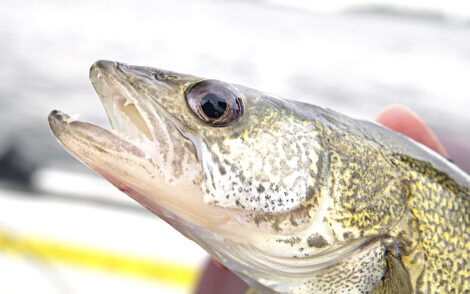North Dakota Outdoors: Explaining differences in survey numbers

Submitted Photo Surveys are a critical part of wildlife management because they help us understand changes over time — how populations are increasing, decreasing or staying stable. Photo by Ashley Peterson, NDGF.
When you hear terms like wildlife survey, census, or index, it might sound like three ways to say the same thing, but there are key differences, especially in how we at the North Dakota Game and Fish Department manage wildlife.
Surveys use scientific sampling to estimate populations. Our spring sharp-tailed grouse lek counts, for example, give a reliable picture of trends without counting every single bird. Surveys are a critical part of wildlife management because they help us understand changes over time — how populations are increasing, decreasing or staying stable.
A wildlife census is the most straightforward. It’s a complete count. Think of it like counting every bighorn sheep or whooping crane. With limited numbers it’s much easier than, say, an actual census of every deer, pheasant or duck. To do so would require immense resources of money, time and people.
Then there’s the index, a tool that tracks trends rather than hard numbers. Think of roadside brood counts for pheasants. We’re not counting every chick out there, but the numbers counted on specific routes give us a year-to-year comparison that helps paint the big picture. Even more as the years and decades stack up.
Each of these tools — census, survey, and index — play a role. None give us all the answers on their own, but together they help biologists make sound decisions to ensure healthy wildlife populations for future generations.
The North Dakota Game and Fish Department’s 78th annual spring breeding duck survey showed an index of about 2.66 million birds, down from 2.9 million in 2024 and 3.4 million in 2023. The 2025 breeding duck index was the 33rd highest on record and exceeded the long-term (1948-2024) average by 7%.
The mallard population estimate was down 26% from last year and is the lowest estimated mallard breeding population on our survey since 1993. Blue-winged teal, green-winged teal and pintails also had significant population declines, whereas the declines for gadwall, shovelers and ruddy ducks were not as significant.
There are a few things factoring into the declines, including poor wetland conditions for early migrating species like mallards and pintails. Many of these birds, which arrived in North Dakota before the nourishing rains in May, likely spurned the state because of dry conditions and headed to search for breeding areas farther north. Also, the decline in breeding duck numbers has a lot to do with the loss of CRP and perennial grasses on the landscape used for nesting cover by ducks.
One metric we look at goes back to 1994 to 2016 when we had really good wetland conditions and a lot of grass, a lot of CRP on the landscape. Our total duck population is now down 34% from that time period’s average, and our mallard breeding population in North Dakota is down 57% from that average. Those are pretty significant declines.
For duck populations to rebound in North Dakota and provide good opportunities for hunters, more grass and water are needed.
North Dakota is the duck factory of North America. We have a lot of folks relying on us to produce ducks, not just our hunters here in North Dakota, but hunters all across the Central and Mississippi flyways. When we have poor production in North Dakota, other folks feel it as well. Unfortunately, the direction we’re going right now is smaller and smaller fall flights.
While the Mid-continent duck populations aren’t what they once were, we’ll know more once the U.S. Fish and Wildlife Service releases its fall survey area results sometime in early fall.


